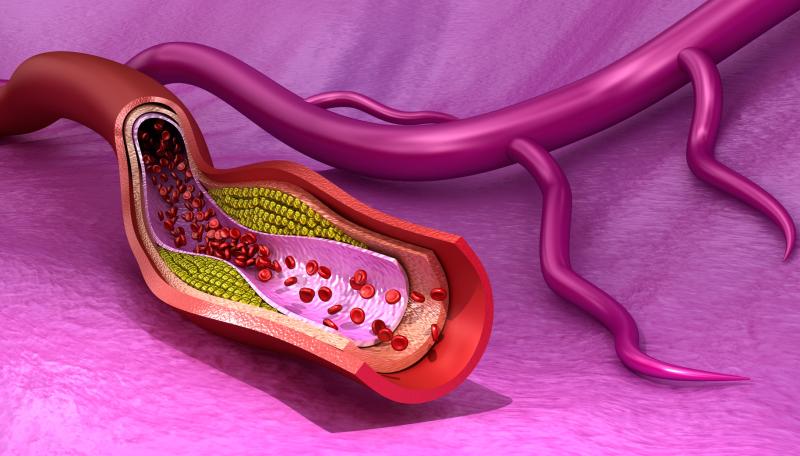
Patients who have undergone revascularization for peripheral artery disease are at risk of earlier limb and later cardiovascular ischaemic events, and such risk is particularly greater among those with postprocedure major adverse limb events (MALE) hospitalization, according to a study.
A total of 393,017 revascularized patients were followed for a median of 2.7 years (interquartile range, 1.3–4.4 years), among whom the cumulative incidence of myocardial infarction (MI) or stroke was 9.8 percent and that of major amputation or peripheral revascularization was 41.9 percent. Of the patients, 50,750 (12.9 percent) had at least one postprocedure MALE hospitalization.
Time-dependent covariate-adjusted models exhibited the association of postprocedure MALE hospitalization with a higher risk of subsequent MI or stroke (hazard ratio [HR], 1.34, 95 percent confidence interval [CI], 1.28–1.40) and major amputation or peripheral revascularization (HR, 8.13, 95 percent CI, 7.96–8.29).
Moreover, the risk of limb events increased quickly postprocedure and more slowly after the first year of peripheral revascularization with or without postprocedure MALE hospitalization. On the other hand, cardiac risk rose steadily during follow-up.
“Increased provider awareness of these long-term risks may guide efforts to improve postprocedural outcomes,” the investigators said.
In this study, patients undergoing peripheral artery revascularization between 1 January 2009 and 30 September 2015 in the Premier Healthcare Database were examined for the coprimary outcomes of interest (ie, composite MI or stroke and composite major amputation or peripheral revascularization). The investigators estimated HRs for outcomes by developing multivariable-adjusted Cox proportional hazards models with postprocedure MALE hospitalization included as a time-dependent covariate.